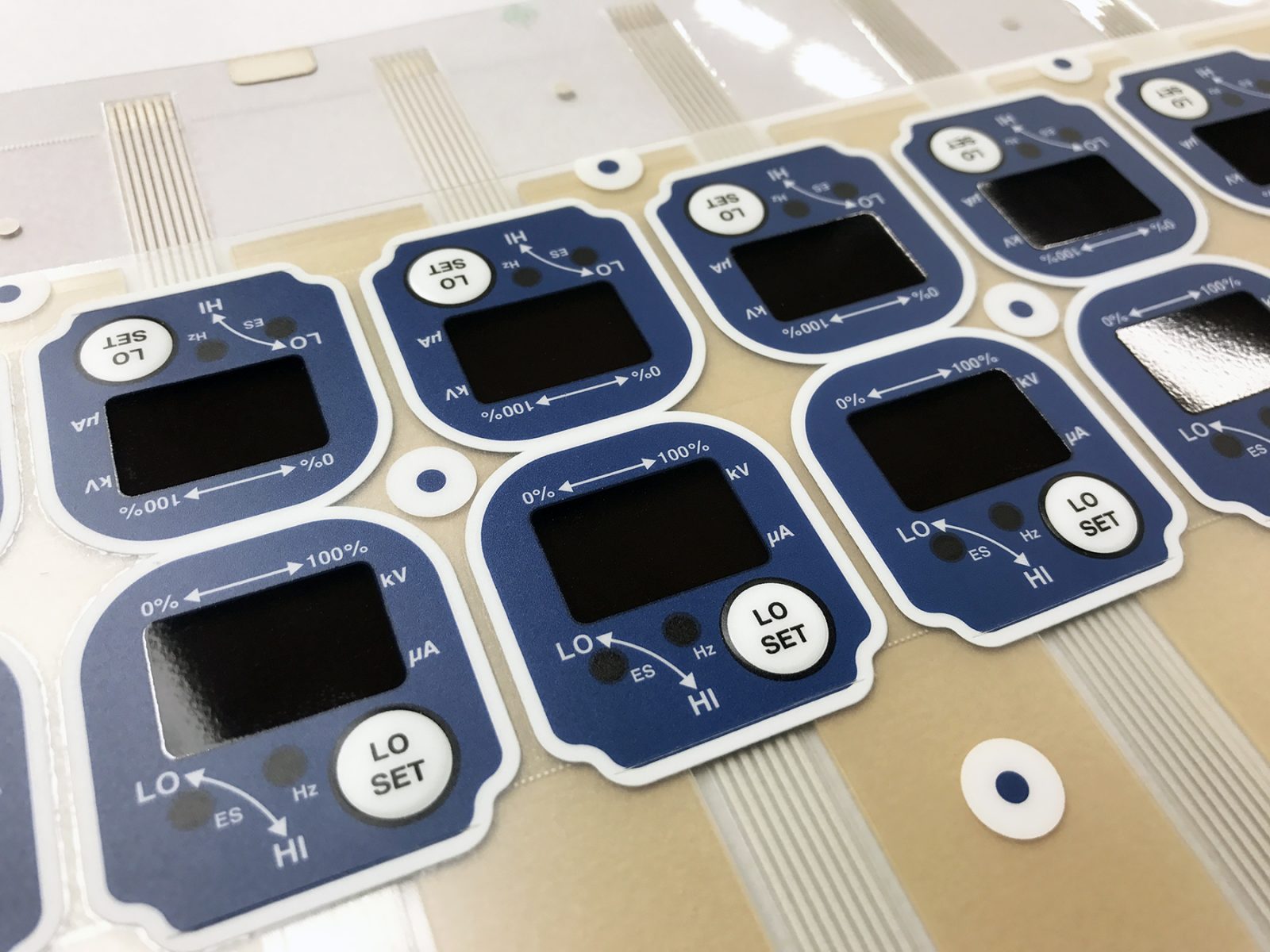Understanding the Capability of Membrane Switches for Customer User Interface Gadget
The functionality of membrane layer switches represents a substantial development in individual interface style, combining effectiveness with visual versatility. As industries significantly focus on individual experience, recognizing the nuances of membrane switch modern technology becomes vital.
What Are Membrane Layer Switches?
Membrane layer buttons are cutting-edge user interface tools that promote customer communication with digital devices. These flexible elements contain numerous layers, consisting of a graphic overlay, spacer, and a published circuit layer. The layout enables for a smooth combination right into numerous electronic devices, enhancing both the aesthetic and useful facets of interface.
Membrane layer buttons are typically employed in a large range of applications, from house devices to commercial machinery and clinical tools. Their construction generally features a slim account, making them a perfect choice for compact layouts. The responsive comments offered by these switches can be crafted to satisfy certain individual choices, guaranteeing efficient communication in between the individual and the device.
Durability is another considerable benefit of membrane switches, as they are resistant to dust, moisture, and chemicals, which boosts their lifespan in demanding atmospheres. Furthermore, these switches can be tailored in terms of shape, dimension, and graphic design, enabling branding and user-specific functions. In general, membrane layer switches stand for a functional solution for boosting user experience in digital devices, incorporating capability with visual charm in a reliable way.
How Membrane Switches Over Work
Operating on a simple principle, membrane changes utilize a layered construction to register customer input effectively. Each button consists of several layers, consisting of a printed circuit layer, a spacer layer, and a leading graphic layer, which are made to collaborate seamlessly. When an individual presses the leading layer, it compresses the spacer layer, bringing the conductive aspects of the circuit layer right into contact with each other.
This call creates a closed circuit, indicating the tool to perform a specific function. The layout permits various setups, consisting of responsive responses, which can improve the user experience by offering a physical experience upon activation. The products used in membrane switches often include versatile substratums, such as polyester or polycarbonate, which ensure sturdiness and strength versus damage.

Trick Benefits of Membrane Switches

An additional considerable advantage is their compactness. Membrane layer switches are slim and light-weight, which enables suppliers to conserve space in their gadgets without sacrificing capability. This function is particularly valuable in applications where weight and volume are critical factors to consider.
Additionally, membrane buttons are resistant to dirt, moisture, and imp source chemicals, improving their resilience. This strength extends their life-span and minimizes the need for regular substitutes, leading to price savings gradually.
Moreover, the responsive responses given by membrane buttons can be maximized to enhance individual communication. They can include functions such as elevated buttons or audible clicks, boosting use and individual experience.
Applications Throughout Industries
User interface tools utilizing membrane buttons are widespread in a broad variety of sectors, showcasing their flexibility and functionality. Membrane Switch. In the medical market, membrane layer buttons are essential to gadgets such as analysis tools and patient monitoring systems, where their sturdiness and ease of cleaning are critical for maintaining health standards. Likewise, in the vehicle sector, these buttons are used in control panel controls and infomercial systems, giving a smooth and contemporary interface for individuals.
Moreover, the consumer electronic devices field take advantage of membrane buttons in devices and portable gadgets, where small design and user-friendly user interfaces boost customer experience. Industrial applications additionally take advantage of membrane switches for control board in equipment and automation systems, stressing their effectiveness and resistance to severe environments.
In the aerospace and defense markets, membrane layer buttons are used in cabin controls and devices, where reliability and efficiency under severe conditions are critical. Additionally, the pc gaming market progressively integrates membrane buttons in controllers and game machines, adding to an appealing user experience. On the whole, the convenience of membrane layer changes allows their extensive use throughout various sectors, emphasizing their value in modern interface layout.
Future Trends in Membrane Layer Switch Over Technology

In addition, using advanced materials, such as polycarbonate and polyester films, is expected to increase, giving enhanced toughness and resistance to ecological stress Get the facts factors. These products add to the total long life of membrane layer switches, making them suitable for harsher industrial applications.
Additionally, the unification of clever technology, including IoT connectivity, will allow membrane layer buttons to connect with various other devices and systems, assisting in a much more interactive individual experience. This pattern lines up with the growing demand for smart devices across numerous fields, from health care to customer electronic devices.
Last but not least, modification alternatives are prepared for to increase, permitting suppliers to create bespoke solutions customized to details customer demands and choices. These advancements will click site position membrane buttons as essential components in the development of interface technology.
Conclusion
In final thought, membrane switches over represent an essential development in individual interface technology, using a dependable and functional service for varied digital applications. As advancements in material scientific research and touch sensing technologies proceed, the performance and applicability of membrane switches are anticipated to increase, reinforcing their relevance in contemporary digital tools.